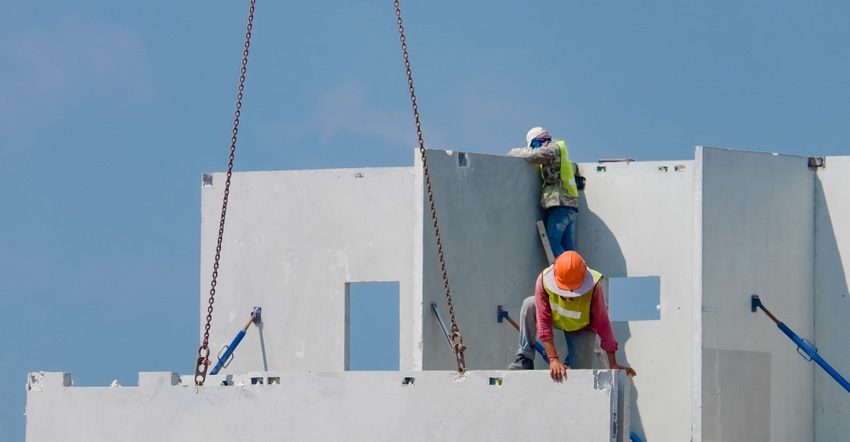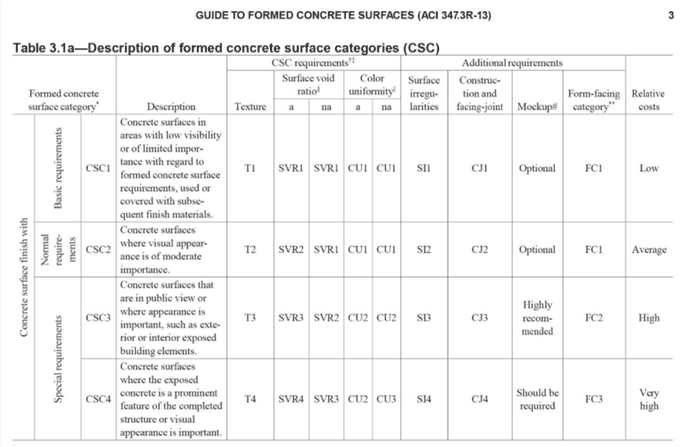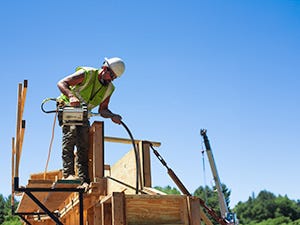Minnich: How to Get a Smooth Poured Wall Surface
Add control speed vibration to your pre-construction checklist!
September 6, 2023

Eliminate Vibration Variability from Your Pre-Construction Checklist
Numerous factors lead to achieving the desired result in a vertical concrete pour. It would take a considerable portion of this article just to list them all. The good news? Thanks to a few focused studies, the concrete vibrator can be eliminated as a contributing factor to surface defects that can occur on concrete-formed walls by controlling vibrator frequency. Here’s how:
Aggregate Selection
A good wall pour outcome begins with a good concrete mix design and concrete workability that allows for ease when the concrete is batched, transported, pumped and vibrated into the forms. The variations in the mixture’s proportions are very important to achieving the properties that are desired from a wall–density with no material separation. Aggregate selection is important to the workability and the ability to fit through narrow areas between rebar. To achieve proper proportions for vibration density levels in mixtures, the amount of paste volume (Vp) must be greater than the amount of measured void volume (Vv). If the void volume that is measured by ASTM C-29 is larger than the amount of paste generated by the mix proportion formula, voids and bug holes will form.
Excess Water
In the batching process and pumping operation there must be no late water additions that will separate from the mix by even a medium range of vibrator frequency. That separated water goes right to the surfaces of the freshly formed walls and results in bug holes, blowholes and voids. Sometimes the displaced water drags Water Reducing Admixtures (WRAs) and material impurities to the concrete surface and causes staining or color uniformity issues.
The ACI 309 Committee has been researching the variability of the relationship between concrete workability, controlled vibration energy, and recognizing and limiting process variability. Understanding and controlling this relationship is important in limiting the number of voids on concrete surfaces. The ACI 347 Concrete Forming Committee has published Table 3.1a in their guide ACI PRC 347.3-13 on the Concrete Surface Categories.

The surface void ratio (SVR) is the most watched standard when vibrating concrete. The SVR index system is a measure of the size and amount of surface voids in a given surface area.The SVR1 is a classification that has the most amount of measured voids. The same can be said for the color uniformity (CU) index. The lowest number (CU1) indicates the worst uniformity measure. SVR and CU indexing plays into the expectations of the concrete surfaces before pouring a wall during the construction process.
There are many variances in the materials that are introduced during batching, and several other concrete processes you must control when producing good concrete form surfaces. A concrete vibrator that puts out uncontrolled energy does not have to be part of the issue. Many construction firms have been testing their concrete mixture during pre-construction trials by using a controlled frequency vibrator (CFV) to choose a fixed frequency for the job.
During pre-construction, many of the variances are tested to give a smooth poured wall surface a fighting chance. It is important to approach the type and application instructions of the form release agent that is recommended by the manufacturer. Also, the material that makes up the form panels should be considered for the standards required for the concrete surfaces. These considerations have a great effect on getting the required surfaces during vibration. Improper form material, poor form surface condition, thickness and uniformity of form release and non-compliance with ACI 347 recommendation of form joints, ties and shoring, lead to surface imperfections.

Vibration Frequency
Noncompliant SVR and CU index values can come from a number of pre-construction variations, and the use of incorrect vibration frequency in relation to the workability of the concrete is one of those areas. Using vibrator frequencies that exceed the concrete workability pushes water away and onto the form surfaces, resulting in surface issues, such as voids from water. A simple rule for the vibrator user is that low-slump concrete can dampen at higher frequencies. However, as the consistency of the concrete becomes more fluid, the higher frequency separates the materials in the concrete. In pumpable and near flowable, fluid-type concrete mixtures the material separated is mainly water.
There are many methods to evaluate the origin of either entrapped air or water-driven voids that appear on concrete surfaces. Normally there is water discolorization around the void, but resistivity testing or a drop test (permeability) will show the amount of water around the surface where voids appear. Many researchers noticed that low-viscosity mixtures showed the presence of voids at the surface with a thin layer of cement paste covering them at the surface that would later be exposed.
Controlled Frequency Vibrators
In the pre-construction trials with CFVs, we began to understand the previous observations on the long history of conclusions that stemmed from the best practices of vibration. The past treatment of vibration is now being replaced by science and measurements so that the rest of the field variances can be properly evaluated.
Technically advanced vibrator motors not only can supply a frequency that is the same despite concrete load changes, it can collect information on the vibration process. Today, we can read the changes in the mechanical resistance of the concrete when different dosages of WRAs are introduced to the mix. Reading the measure of vibration through energy transfers is not in the distant future, it is already here. What we perceive as proper vibration will change as well as the development of quality control procedures for a more predictive outcome of pouring walls that have the desired surfaces.
Controlling the vibration speed and using a heavier vibrator head consolidates concrete without separating it. This reduces surface blemishes to meet SRV codes and minimizes or eliminates costly and time-consuming concrete repairs.
Manufacturers have been working to develop lightweight, durable, electric flex shaft concrete vibrator technology that meets today’s concrete vibration needs. Control speed vibrators allow operators to choose between set speeds of 6,000, 8,000, 10,500 and open VPM to match the compatible speed with their concrete mix. Once a speed is chosen, the CSV will maintain that speed as the concrete load changes. In some instances, vibrator controls are managed via Bluetooth and an app through an iOS or Android device.

On-Site Quality Control Tools
Upfront research is the key to achieving a quality finish that minimizes patch work. As a best practice, decide which vibration speed to use on a project by performing a quality control test. Use the same concrete and vibrator you plan to use on the upcoming project, along with 24-inch wooden box “forms” and differing levels of vibration. Common trial frequencies are 6,000, 8,000 and 10,500 VPM. Once the concrete is cured, evaluate each form to determine which vibration frequency resulted in the best product.
As a contractor, producing quality concrete is a great way to show customers your commitment to them, too. You care about their project and their business, which is why you’re always making improvements to how you work. Improvements in the form of productivity, efficiency and quality of product. Customers will notice your dedication — and you’ll earn their trust and respect in return.
You May Also Like



